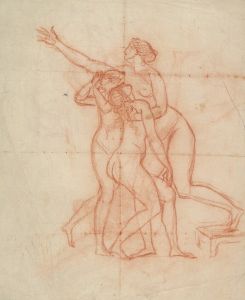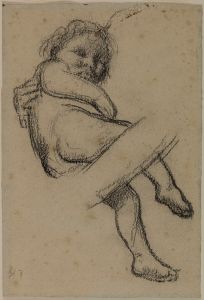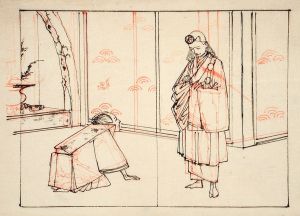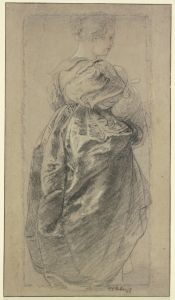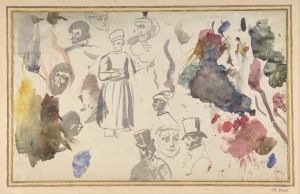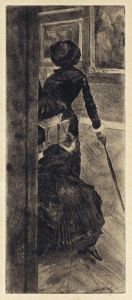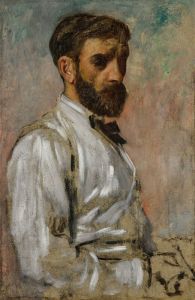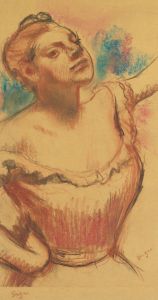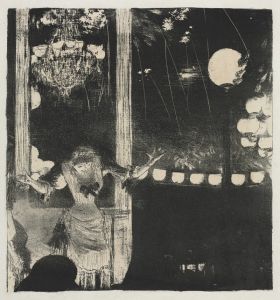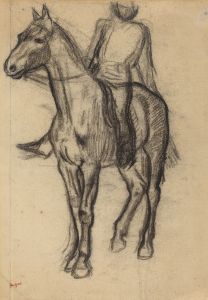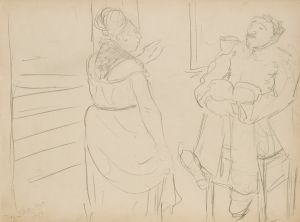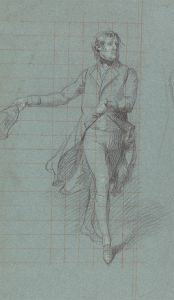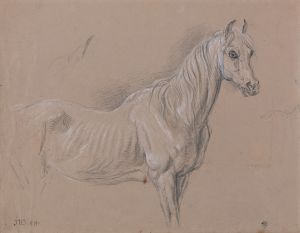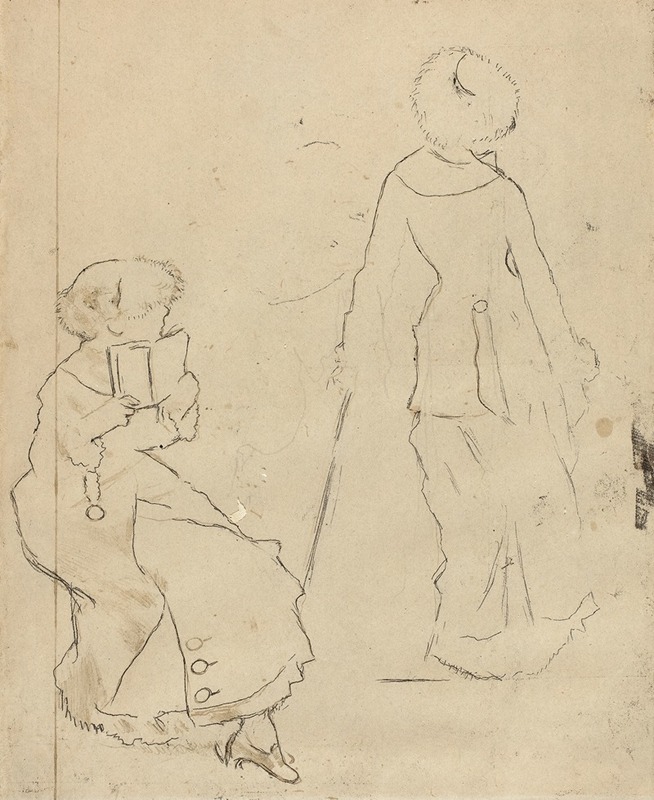
Study for ‘Mary Cassatt at the Louvre’
A hand-painted replica of Edgar Degas’s masterpiece Study for ‘Mary Cassatt at the Louvre’, meticulously crafted by professional artists to capture the true essence of the original. Each piece is created with museum-quality canvas and rare mineral pigments, carefully painted by experienced artists with delicate brushstrokes and rich, layered colors to perfectly recreate the texture of the original artwork. Unlike machine-printed reproductions, this hand-painted version brings the painting to life, infused with the artist’s emotions and skill in every stroke. Whether for personal collection or home decoration, it instantly elevates the artistic atmosphere of any space.
"Study for ‘Mary Cassatt at the Louvre’" is a pastel drawing created by the renowned French artist Edgar Degas in the late 19th century. Degas, a prominent figure in the Impressionist movement, was known for his innovative compositions and his focus on capturing modern life, particularly scenes of Parisian society. This particular work is a study for a larger painting, which reflects Degas's interest in the theme of women in public spaces, a subject he explored in various works.
The drawing features Mary Cassatt, an American painter and printmaker who became a close friend and collaborator of Degas. Cassatt was one of the few female artists associated with the Impressionist movement and was known for her depictions of the private and social lives of women. In "Study for ‘Mary Cassatt at the Louvre’," Degas captures Cassatt in a moment of observation and reflection, emphasizing her role as both an artist and an observer of art.
The setting of the Louvre, one of the world's most famous art museums, underscores the intellectual and cultural environment that both Degas and Cassatt inhabited. The Louvre was a significant site for artists and art lovers in Paris, offering a vast collection of artworks from different periods and regions. By placing Cassatt in this context, Degas highlights her engagement with the art world and her position within it.
Degas's technique in this pastel drawing is characteristic of his style, with a focus on line and form rather than detailed realism. The use of pastel allows for a softness and immediacy in the depiction, capturing the essence of the moment rather than a precise likeness. This approach is typical of Degas's work, where he often prioritized the overall composition and mood over meticulous detail.
The relationship between Degas and Cassatt was one of mutual respect and artistic influence. Degas admired Cassatt's work and often invited her to exhibit with the Impressionists. Cassatt, in turn, was influenced by Degas's techniques and his approach to composition. Their friendship and professional relationship were significant in the context of the Impressionist movement, which was characterized by a spirit of collaboration and innovation.
"Study for ‘Mary Cassatt at the Louvre’" is an example of Degas's interest in capturing the nuances of modern life and the roles of women within it. Through this work, Degas not only portrays a fellow artist but also comments on the broader themes of observation, art, and society. The drawing remains an important piece within Degas's oeuvre, reflecting his skill as a draftsman and his ability to convey complex themes through simple yet powerful imagery.





